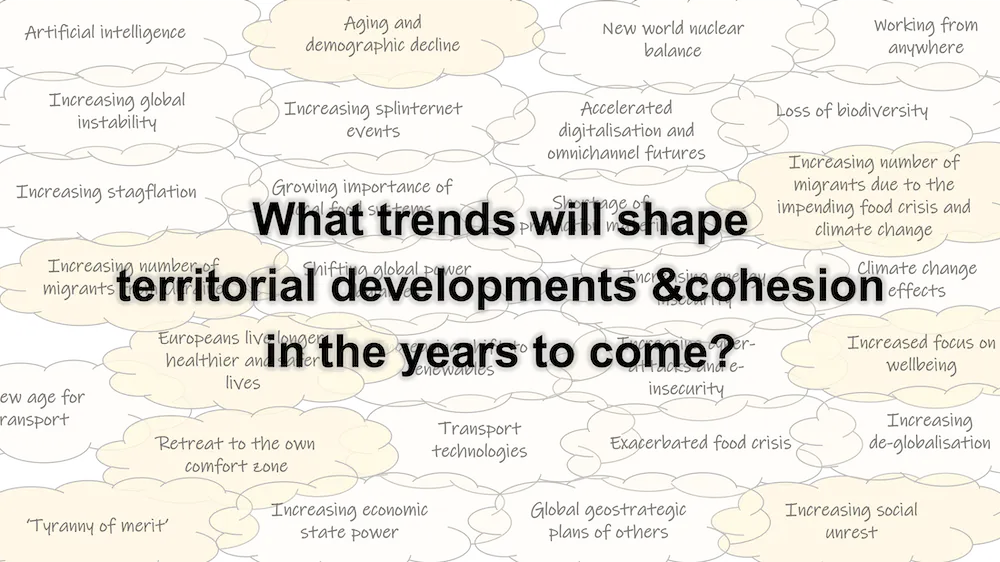Societal trends shaping territorial cohesion
January 2023

Following up on the blog posts on technological (Opens in a new window) and environment related (Opens in a new window) trends shaping territorial cohesion, this blog post addresses a collection of societal and demographic trends. The collection is based on various studies addressing mega-trends which we have conducted during 2022, e.g. for the European Parliament (Opens in a new window), the European Committee of the Regions (Opens in a new window) or ESPON (Opens in a new window). Bringing together the various pieces of trend analysis provides a rich picture about possible developments which may shape territorial development and cohesion in Europe.
Trends considered to have the strongest impacts on territorial development and cohesion include exogenous technological trends (e.g. digital society, post-carbon and circular economy), social change (e.g. migration, aging, fluid social institutions and shifts in values), environment (e.g. adapting/mitigating climate change and managing scarce resources), and economic (e.g. slowbalisation, peak of everything, working from anywhere). Also political trends play an important role, both political developments in Europe, as well as those in other parts of the world which affect development prospects in Europe.
The combined picture which emerges from this suggests that future trends are likely to exacerbate spatial and societal fragmentation, interdependencies and policy mismatches. In many regards, the trends point to a risk of increasing concentration on urban areas with growing territorial imbalances and inequalities, which may translate into social fragmentation and increasing discontent. This also risks to increase perceptions of uncertainty and vulnerability in a world of disruptive changes leading to ‘pervasive uncertainties’.
From a global perspective, while some countries and societies will increasingly age, others will have low median ages. The most attractive and fastest growing centres are expected to not be in the EU and may increasingly attract talents from Europe. At European level, ageing will remain the key influence on demographics with significant impact on pension systems, social values and lifestyles. Other European trends refer to increasing migratory pressures, for both external and internal migration. As a result of these trends, retrospective political values may continue to rise across Europe in the coming years. Taken together, demographic trends have a negative impact on territorial development objectives. Asymmetric global demographic growth can result in further fragmentation across spaces. Similarly, these trends exacerbate interdependencies across territories or even ignore them (when it comes to closing borders), stressing at the same time a misalignment of geographical jurisdictions for decision making.
Demographic trends
Some of the societal and demographic trends to be considered:
To read this post you'll need to become a member. Members help us fund our work to ensure we can stick around long-term.
See our plans (Opens in a new window)
Already a member? Log in (Opens in a new window)


